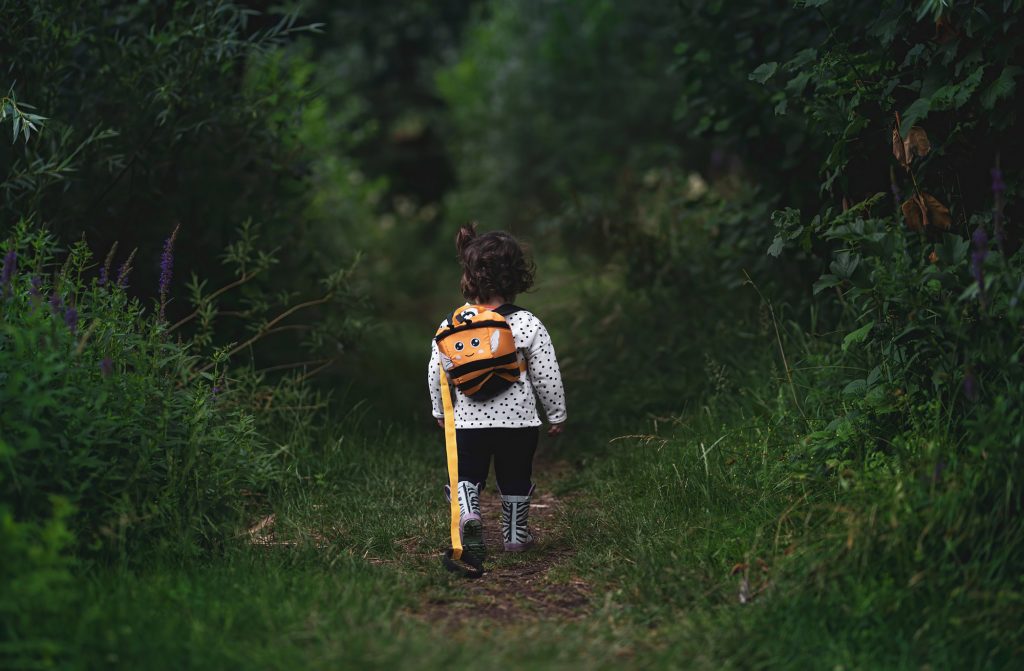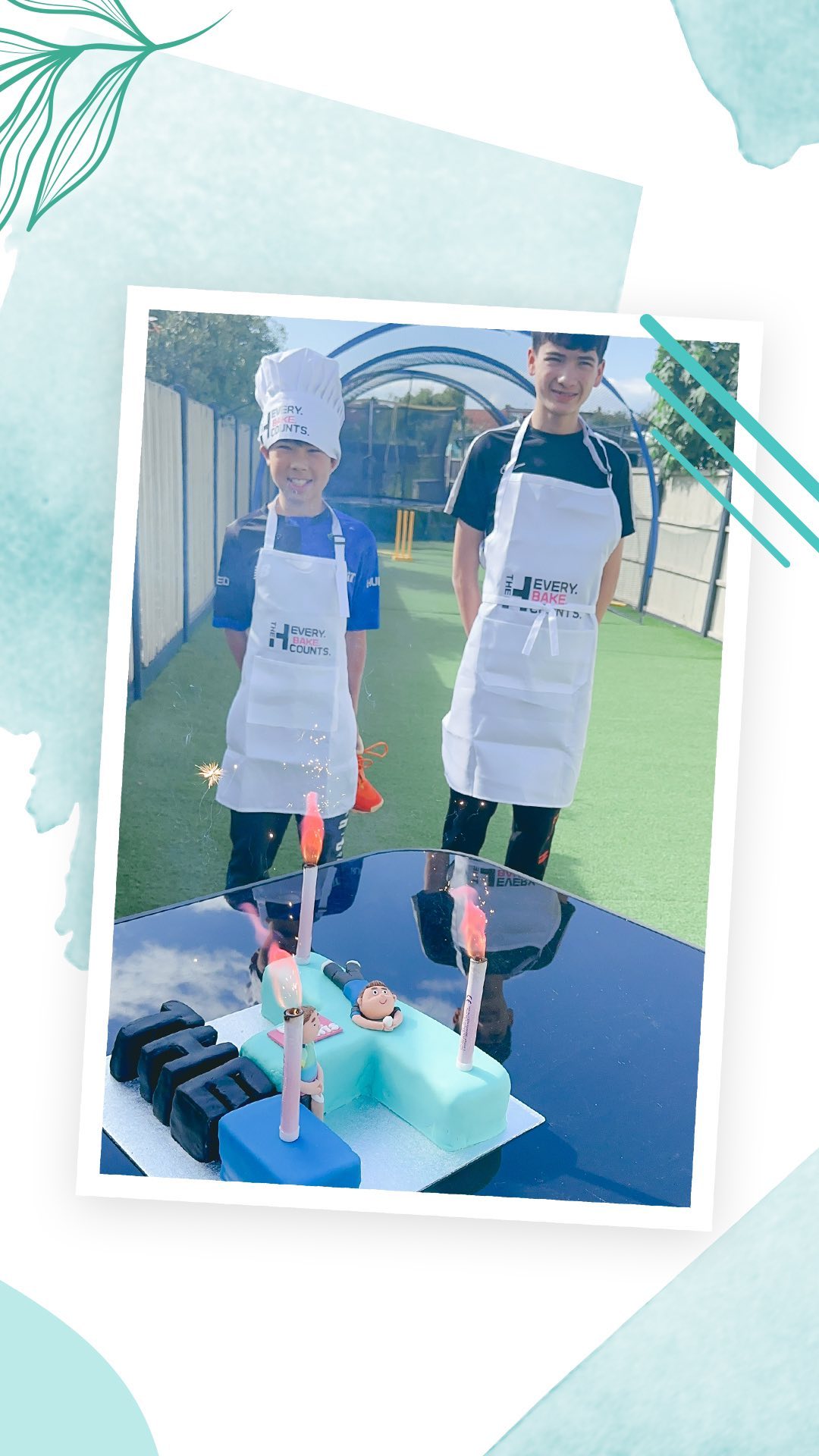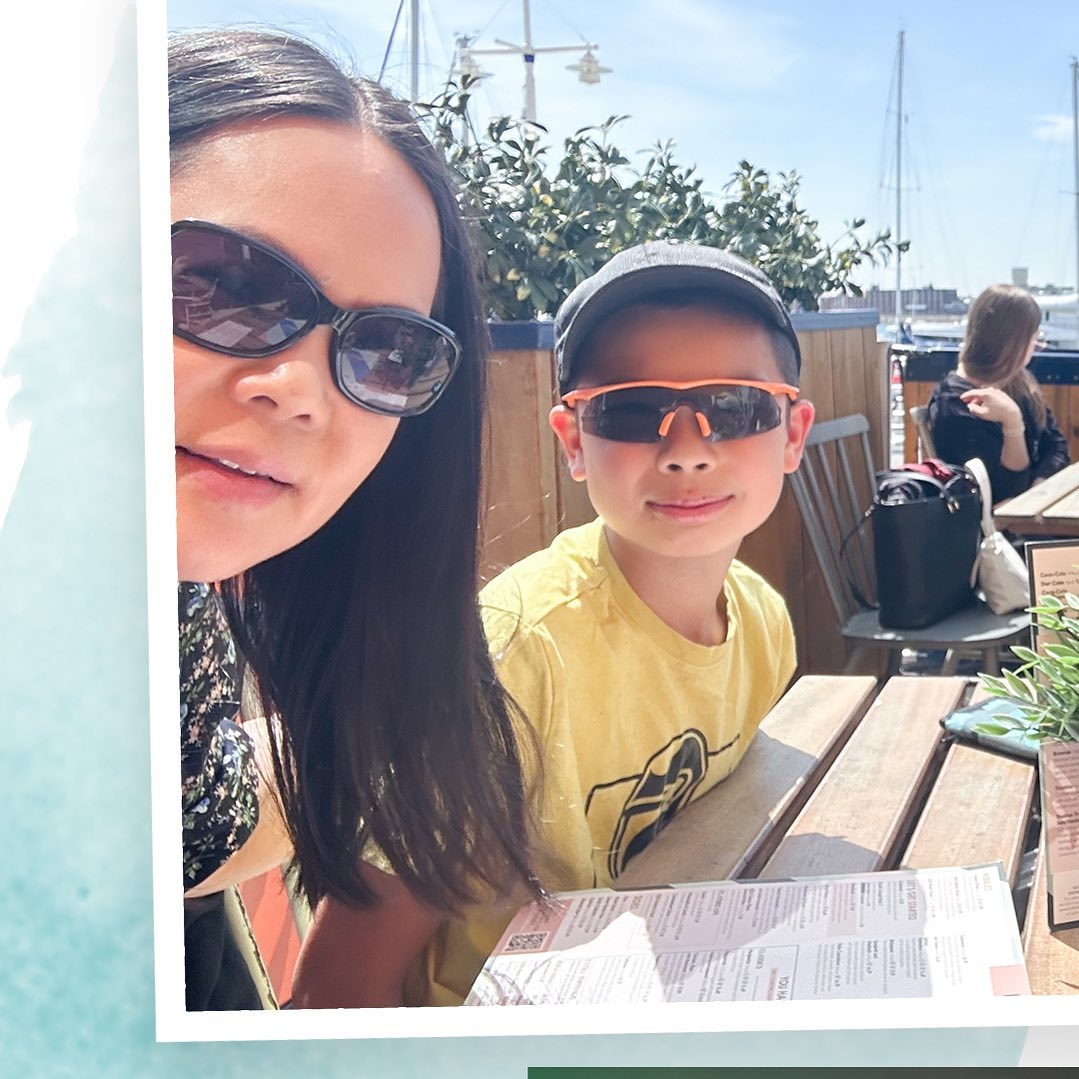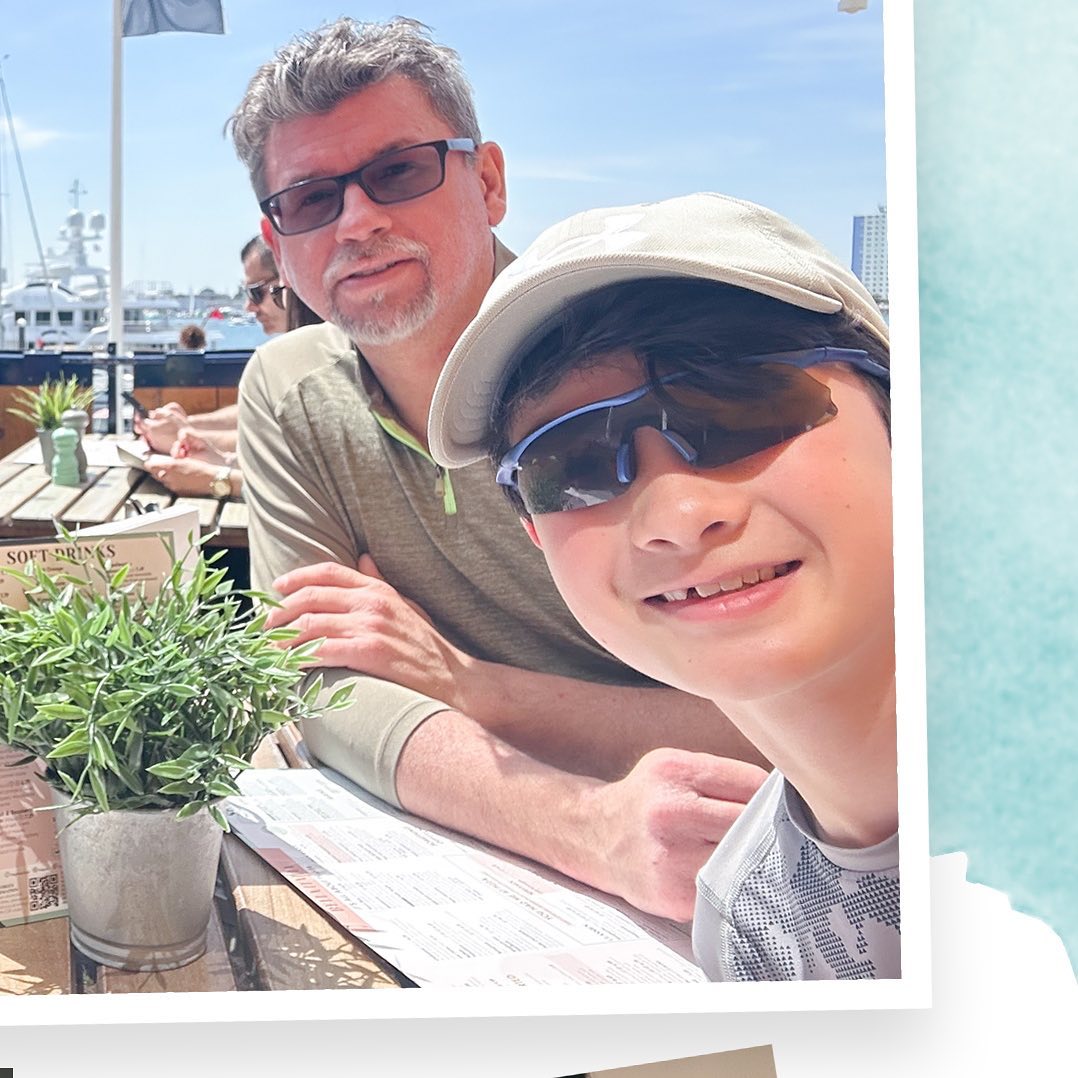How to encourage a connection to nature in your children
“Let nature be your teacher” — William Wordsworth
In his book The Last Child in the Woods, Richard Louv coined the phrase ‘nature-deficit disorder’ to refer to the increasing lack of time we (and especially our children) are spending outside. If you’re worried that your child is favouring ‘screen time’ over outdoor play, there are plenty of ways to inspire them to put down their tablets, pull on their wellies and get good and grubby in the great outdoors!

As the Child Mind Institute attests, encouraging your little one to embrace their ‘greener’ side has a multitude of benefits for their rapidly developing minds and bodies. A love of nature promotes creativity, stimulates their imagination and teaches responsibility, whilst it can also aid their cognitive development and reduce anxiety and fatigue. So with a connection to nature more important than ever for your child’s growth, here are some tried-and-tested ideas to inspire their passion for all things wild and wonderful.
Embrace the outdoors
Whether you live in the middle of a bustling city or out in the countryside, there’s nature to be discovered everywhere. You just need to know where to look! Why not swap an afternoon in front of the TV for a family hike? Along the way, encourage your little one to tune in to the sounds they hear and the things they see, from the choruses of birdsong to the tall trees overhead.
If you want to get really adventurous, a family camping trip might be just the thing to foster a love of the outdoors in your child. And for some more dramatic (and slightly pricier) wildlife encounters, find your nearest zoo, farm or aquarium for a day of wild fun with a little education thrown in too!
Go Wildlife spotting
If you live close enough to a park, a lake or a wood, there’s no limit to the amount of wildlife you can discover, from creepy crawlies to crafty squirrels. Get your child to keep a tally of everything they spot, and ask them to recall their wild discoveries at the end of their trek! If you’re lucky enough to live near the sea, explore the rock pools and encourage them to collect their favourite shells and stones.
If you have a garden (or even if you don’t) birdwatching is a great way for your little one to engage with nature without venturing far (you can encourage ornithological visitors using feeders, birdbaths and bird tables). A handy pair of binoculars from the RSPB will help them spot and identify their favourite feathered friends, whilst your purchase will help the RSPB (the Royal Society for the Protection of Birds) continue their important conservation work.
Plant the seed(s)
When it comes to turning your child into a nature lover, flora is just as important as fauna! Encourage your green-fingered little one to choose some seeds (sunflowers, sweet peas and marigolds are perfect for tiny gardeners), help them to plant them in their own special spot (a windowsill is fine if you don’t have a garden) and then watch them grow! As they tend to their patch and keep a close eye on its progress, they’ll learn a sense of responsibility and the virtue of patience.
And whilst fruit and vegetables may be the natural enemy of most under 10s, why not encourage them to try their hand at growing their own? The novelty of eating a carrot, a tomato or a cucumber they’ve grown themselves could help to alleviate their aversion to veggies and help them develop a healthier diet.
Get creative
If you want the natural world to make a lasting impression on your little one, you have to make it fun! You could turn a walk in the woods into a game. For example:
- The alphabet game: can you think of an animal beginning with each letter from A to Z?
- A scavenger hunt: be the first to find a pine cone, a spider web or a set of animal tracks
- A nature-themed game of I Spy: what natural spectacles can you spot?
Why not get a little arty, too. Find a quiet spot outdoors and get them to sketch (or paint) what they see, or get them to draw the bugs, the birds and the other creatures they’ve spotted that day. It’s a great way of stimulating their creativity whilst developing their memory and their knowledge of all things wild!
Read, watch and learn
The last thing you want is for your child to be glued to a screen 24/7, but you don’t have to venture outside to keep them connected with nature. On those gloomier days, don’t forget that TV shows, films and books can be invaluable resources when it comes to educating and inspiring your offspring to love their environment.
It’s never too early to introduce them to Sir David Attenborough, but for younger naturalists, there’s plenty to explore on the BBC’s Earth Kids YouTube channel, including Wild Bites and the nail-biting Deadly 60. For little movie lovers, Pixar’s Finding Nemo will introduce them to an array of aquatic wildlife, whilst Dreamworks’ Madagascar features a multitude of exotic critters. And to feed their little imaginations even further, check out Penguin’s best nature books for kids for some inspiring bedtime reading.
Whether your child is a toddler taking their first tentative steps into the great outdoors, or a pre-teen who needs a bit of encouragement when it comes to embracing nature, we’re sure these fun ideas will help to cultivate an everlasting affinity to the natural world in your precious little one.
![[AD] We’re a cricket-mad family, so we’re buzzing that @thehundred is back this August! 🏏🔥
To get ready, M tried out the official FREE Activity Pack — and it’s brilliant! 🙌
Packed with fun games, creative challenges and sporty tasks, it’s perfect for getting kids hyped whether you’re at home or on the go.
👉Download yours now (link in bio)
@londonspirit @ovalinvincibles #EveryMomentCounts #TheHundred
#EnglandCricket #CricketFamily #TheHundredCricket #LondonBloggers #Cricket #CricketIsLife #kidsfun](https://suburban-mum.com/wp-content/uploads/2022/11/505472555_18531279601016840_7092520074819907569_n-180x320.jpg)



![[AD - Press visit]
We enjoyed the glorious sunshine this weekend with a trip to Brighton. We went on the @brightoni360official which is right by the sea front.
The i360 pod take a slow journey up, allowing you to take in views across Brighton and the South Downs 450ft above ground. There’s a bar inside with drinks and snacks available to purchase and the experience lasts 25 minutes.
Afterwards, we headed to the open air roller rink for a roller skating session!
The roller rink is:
⭐ Suitable for over 5s
⭐ £6.50 if you have your own skates or £9.50 if you need to hire them
⭐ 45 minutes per session
Full details to visit the i360 + skating
📍 Brighton i360, Lower Kings Road, Brighton BN1 2LN
🚗 Parking nearby (we parked in the Regency Square Car park)
🎟️ Prices start from £25.40 for an adult and £16.90 for a child
🕐 Opening hours are currently Sun-Fri 10.30am-18.30pm and until 19.30pm on Saturdays
☕️ Bar inside the i360, cafe and gift shop
Book tickets here:
https://tickets.brightoni360.co.uk/tickets/?_ga=2.195305772.1869001490.1689671753-1757164059.1689671753/#events?eventid=157](https://suburban-mum.com/wp-content/uploads/2015/04/417980235_313576471048632_3682382982231216432_n.jpg)

![[AD] ***Summer of fun at Barracudas Activity Camps!****
There is plenty for kids to do at @barracudas_activity_day_camps
From Tennis, Archery, Swimming, Motor Sports and more you can be sure that there will be something for kids aged 4.5-14. ⚽🏈🥅🎾🏓🏎️🏹🏊♂️🏉
You can book on a day by day basis - so it can fit in with any other days out/activities you have planned and there are early drop off and late pickup options available. Barracudas are also Ofsted registered so you can use your Childcare Vouchers too.
⭐⭐⭐Get £20 off a week or £4 off a day using my discount code: MARIA20⭐⭐⭐
#BarracudasActivityDayCamp #BarracudasActivityCamp #BarracudaAmbassadors #SummerHolidays #SchoolHolidays #Summer2023 #SummerCamp #DayCare #Camp #KidsCamp #surreymummy #surreymums #SummerOfFun #ActivityCamps #HolidayCamps #Childcare #SchoolHolidays #schoolholidaycamps](https://suburban-mum.com/wp-content/uploads/2024/07/353583570_625625966167953_545896259645102575_n.jpg)



![[AD] We have some super exciting news...we have been chosen to be Laser Quest Ambassadors, and the boys are over the moon!
We are really lucky that our local Laser Quest (@laserquestkingston) is just around the corner from us. It means we can pop in of a weekend or anytime during the school holidays, and with summer just around the corner, I know Laser Quest will be one of our go-to places for some family fun.
As well as games of Laser Quest, there are also VR experiences and arcade amusements too. To find out a bit more about how Laser Quest works, you can read my blog post: https://www.suburban-mum.com/laser-quest-kingston/ (clickable link in bio)
Don't forget to keep an eye out for our Laser Quest posts - I'm going to be giving away two family passes to use at Laserquest Kingston!
If you can't wait and want to head down to Laser Quest to try it out, use the code SUMMER30 for 30% off your booking. The code is valid from now until the end of August 2023 and can be used on Laser Quest games and birthday party bookings.
#LaserquestAmbassador #Laserquest #LaserquestKingston #ActivitiesForKids #FamilyFun #DaysOutWithKids #Lasertag #LaserquestVR #Kingston #ThingsToDoInKingston #SurreyFamilyDaysOut #ThingsToDoWithKids #RainyDayFun #SurreyMummy #SurreyLife #LifeWithKids #LifeWithBoys #familyfunday](https://suburban-mum.com/wp-content/uploads/2015/04/353230107_797358078406942_2405522556733455165_n.jpg)

![[AD] The sun has finally made an appearance and the boys have been making the most of it by spending it
in the garden.
They’re go-to is always football and they’ve been trying to improve their aim and accuracy with the new Messi Foldable Footlball goal from the #MessiTrainingSystem range.
I love the fact the goal is foldable, making it easy to store away when not in use. It is also lightweight so you can effortlessly pack it up and take it to the park or to a friend’s house.
The Messi Foldable Football Goal retails at £36 and can be purchased from @argos
You can read my full review here: https://www.suburban-mum.com/messi-foldable-football-goal/
#TrainLikeMessi #FoldableFootballGoal #FootballSkills #OutdoorFun #LionelMessi #LeoMessi #FootballAtHome #OutdoorKids #JustGetOutside #OutdoorsAndFree #ScreenFreeKids #WhateverTheWeatherKids @flair_gp](https://suburban-mum.com/wp-content/uploads/2015/04/341194882_615024710178056_41977149395989448_n.jpg)

![[AD] We are absolutely thrilled to announce that we are Barracuda Ambassadors again this year.
With Easter just around the corner, the boys were sent the @barracudas_activity_day_camps new camp kit in preparation for the school holidays.
There’s a wide range of activities for kids aged 4.5 - 14 including Tennis, Archery, Basketball, Arts & Crafts and more.
If you like the sound of Barracudas, find out more over on their website. You can also save £20 a week or £4 a day, using my discount code: MARIA20](https://suburban-mum.com/wp-content/uploads/2024/07/336812306_765234558514317_685553691647241974_n.jpg)


![[AD - Gifted]
Last weekend we were invited to try out @tsarettaspice’s new Bottomless Brunch menu and I can tell you it was thumbs up all round!
There’s a good choice tapas on offer from Punjabi fish fingers, Indo Chinese Chicken to Spiced Lamb Scotch Eggs and Manchurian Cauliflower (which was amazing!)
If you’re local to Twickenham and fancy giving them a try here’s are the details.
Tsaretta Spice Bottomless Brunch
⭐️£37.50 per head for bottomless Prosecco or cocktail of the day
⭐️£55 per head for bottomless Champagne
⭐️ Food included: 4 tapas selections and dessert or 2 tapas selections, a pav or naanwich and dessert
⭐️ Non-alcohol brunch is also available
Tsaretta Spice
55 Church Street
Twickenham
TW1 3NR
You can also read our full review over on the blog (link in bio)](https://suburban-mum.com/wp-content/uploads/2024/07/334565436_5960402314015030_663031098700829518_n.jpg)
![[AD] What does family look like for you?
I am fortunate to be surrounded by strong, powerful women in the form of my mum, sister and mother-in-law (along with many others). With Mother’s Day just around the corner, @BootsUK want to celebrate all the different mums and mother figures we are lucky enough to have in our lives. They have a huge range of Mother’s Day gifts to choose from so we can show them how much they mean to us. (swipe to take a look at some of my choices)
If you want to express love and appreciation for the mother figure(s) in your life, head to Boots.com to find the ideal gift. They have a whole host of gifts, so you can be sure to find something to suit all tastes. Celebrate the #LoveForAllMums this Mother’s Day with Boots.
](https://suburban-mum.com/wp-content/uploads/2015/04/334276459_136658625736352_6403224988403337253_n.jpg)




